Menu
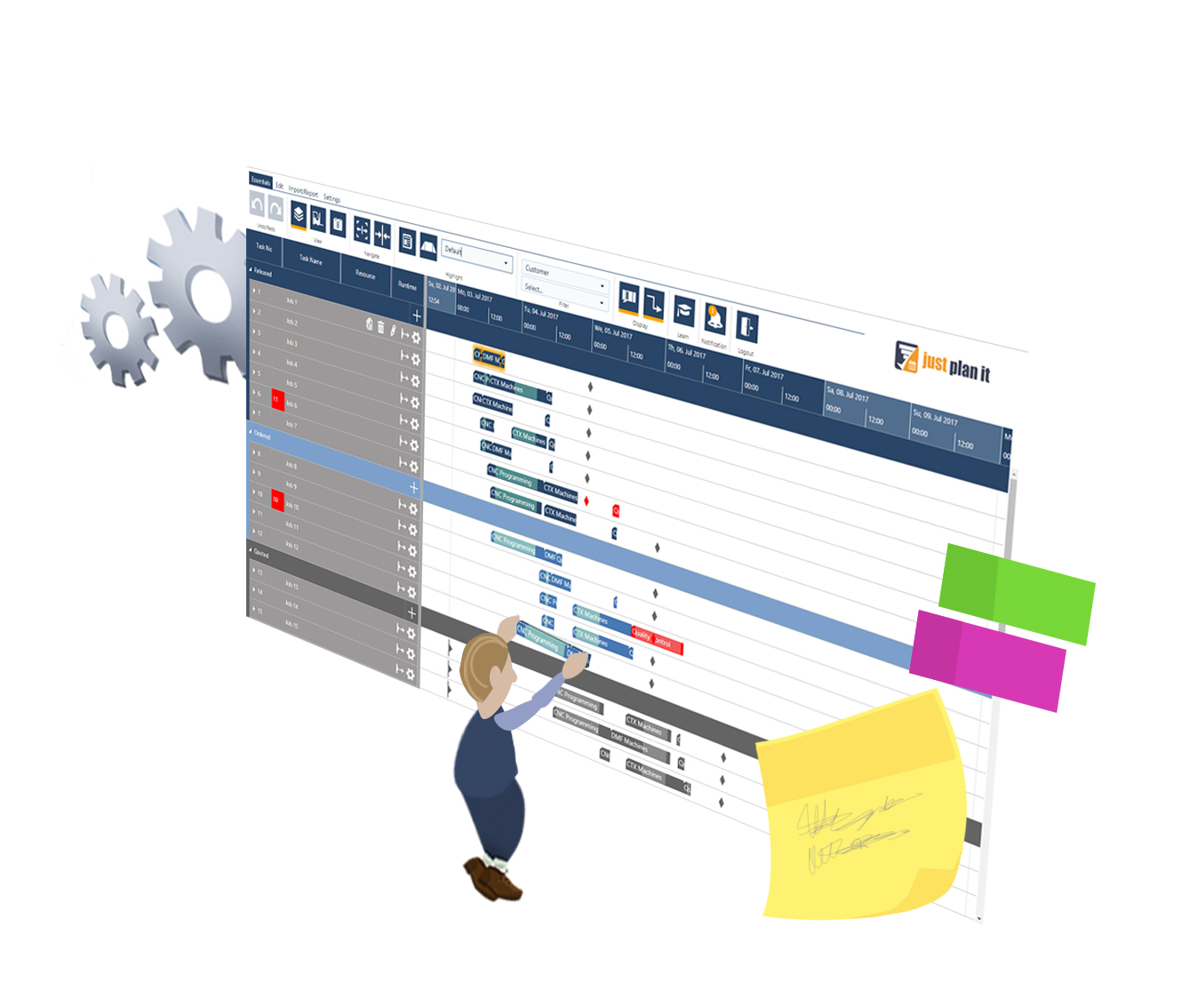
Planners of high-mix low-volume (HMLV) manufacturers have a stressful job. Planning ahead? Not at all. Every order that comes in looks different and has to be guided through the production process differently. It is obvious that the control of the production is very difficult due to the complexity of planning.
Typically, these companies are looking for automatic production scheduling software.
From our experience working with hundreds of HMLV shops, we are convinced that an algorithm should not have the last word in scheduling. We know that the planner on-site is the authority that can best decide how to guide the jobs through the production process.
This is why we developed a hybrid way of production scheduling for high-mix low-volume manufacturers: the algorithm helps the planner in his decision making process. Want to know how it works?
A high-mix low-volume company sells products that are individually designed for their customers. So each order is like a little project of its own. You do not know how the next order will look like and how many of these products you will have to produce.
The production schedule of these manufacturers is "order-oriented", which means the order triggers the production process. Usually, the planner makes a list of orders. If a new order is placed, it is added at the bottom of the list. Then the planner can move orders up the list - he gives them a higher priority - for example, to bring forward the delivery date. Or the priorities shift because a rush order has to be interposed.
This is a very rough scheduling method, it is not oriented towards efficient resource utilization but focuses on the delivery date (which - btw - oftentimes matters much more to our clients).
The production planning software just plan it follows the principle of the priority list. The algorithm calculates - based on the current schedule and based on the given finite capacities - the allocation of resources to the operations in a forward scheduling way. [or backwards aka just-in-time if users apply this mechanism]
As a result, the planner gets a graphical planning board, showing orders, allocated resources, routings, delivery dates, capacity utilization etc.
Now the planner has a complete overview of what is going on on his shop floor.
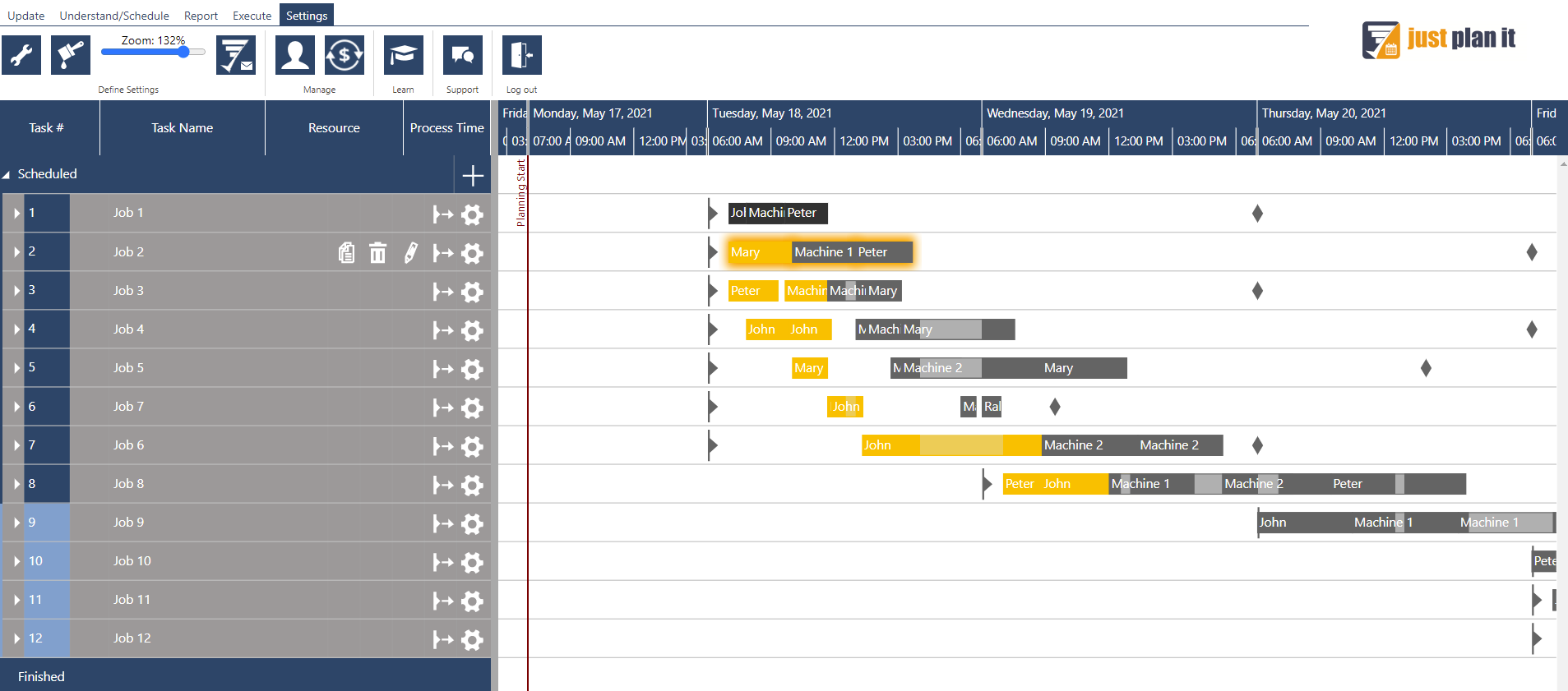
Every day brings something unexpected and this also affects the production schedule:
All these little (sometimes even big) things can influence the process on the shop floor and so the delivery date, which to some extent is the Achilles heel of the schedule.
Consequently, even the best algorithm cannot help us calculate the perfect schedule at every moment of time. The planner must then be able to intervene in the schedule according to the situation and adapt on the fly.
Following, I show you some ways of intervention in just plan it:
The planner can move up manually an order in the priority list. just plan it gives a helping hand, by calculating the best position in the priority list (critical sequence number) without other orders become delayed, and recalculates the other orders with their operations and resource assignments automatically.
The planner can work with the calculated position, or choose his own and accept the associated delays in other jobs.
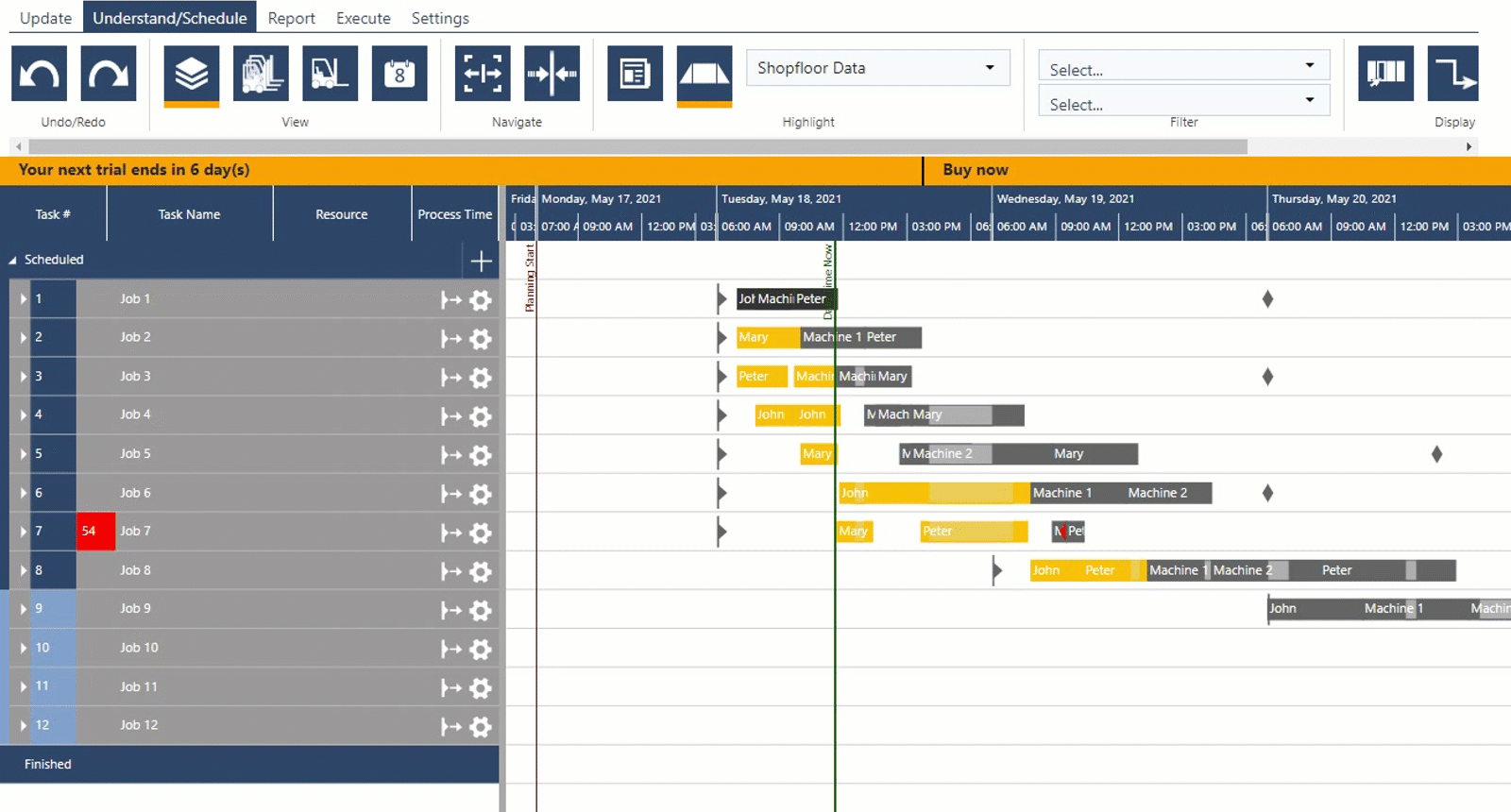
If the change in the priority list has a negative impact on the delivery date of another job, the planner however can also play with resource capacities and ask employees to work an extra hour, for example, to complete operations on time so that there are no delays in further processing.
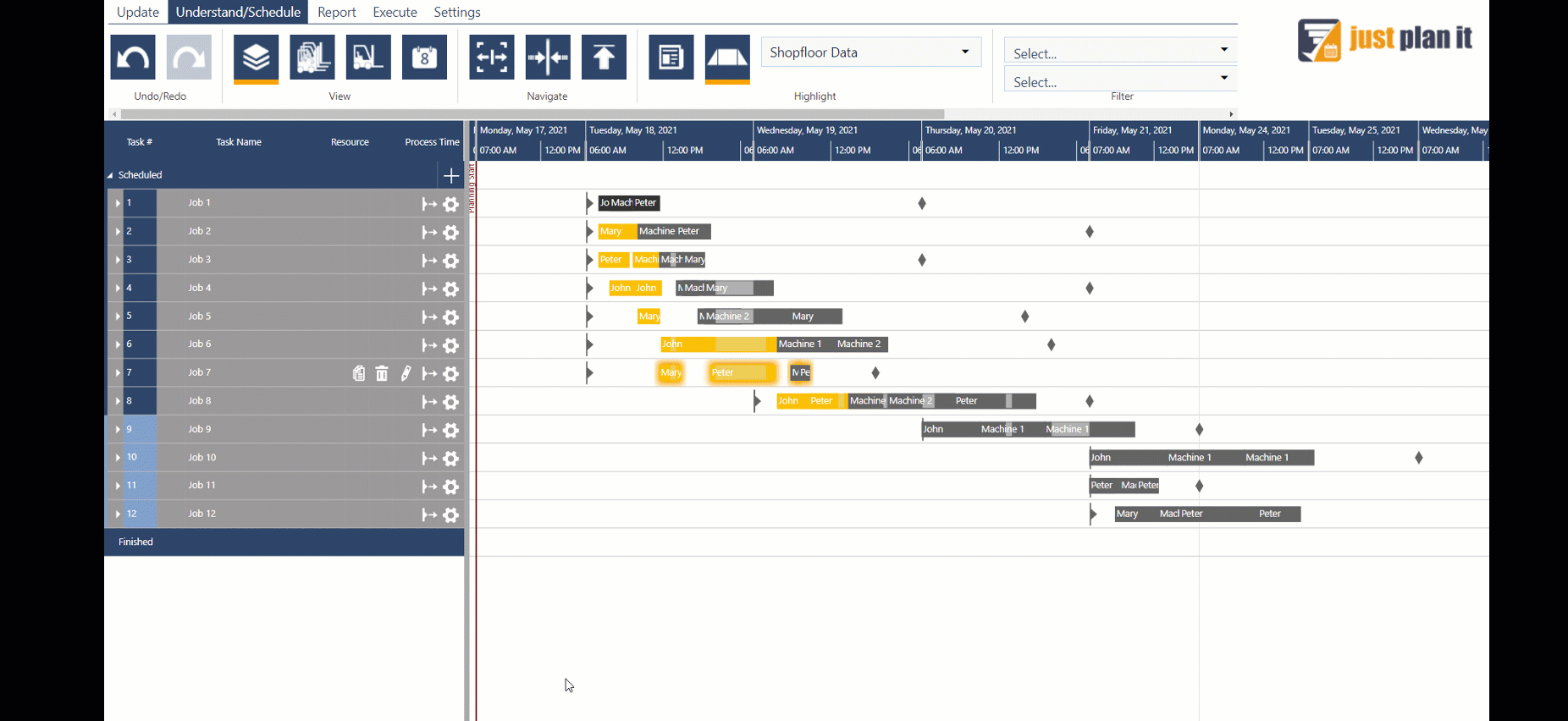
The planner can also move jobs in the timeline by drag & drop, for example when the material is not available on time. He can talk to sales to inform the customer that the delivery will be delayed, or he can change the priority of the jobs and check out the options described earlier.
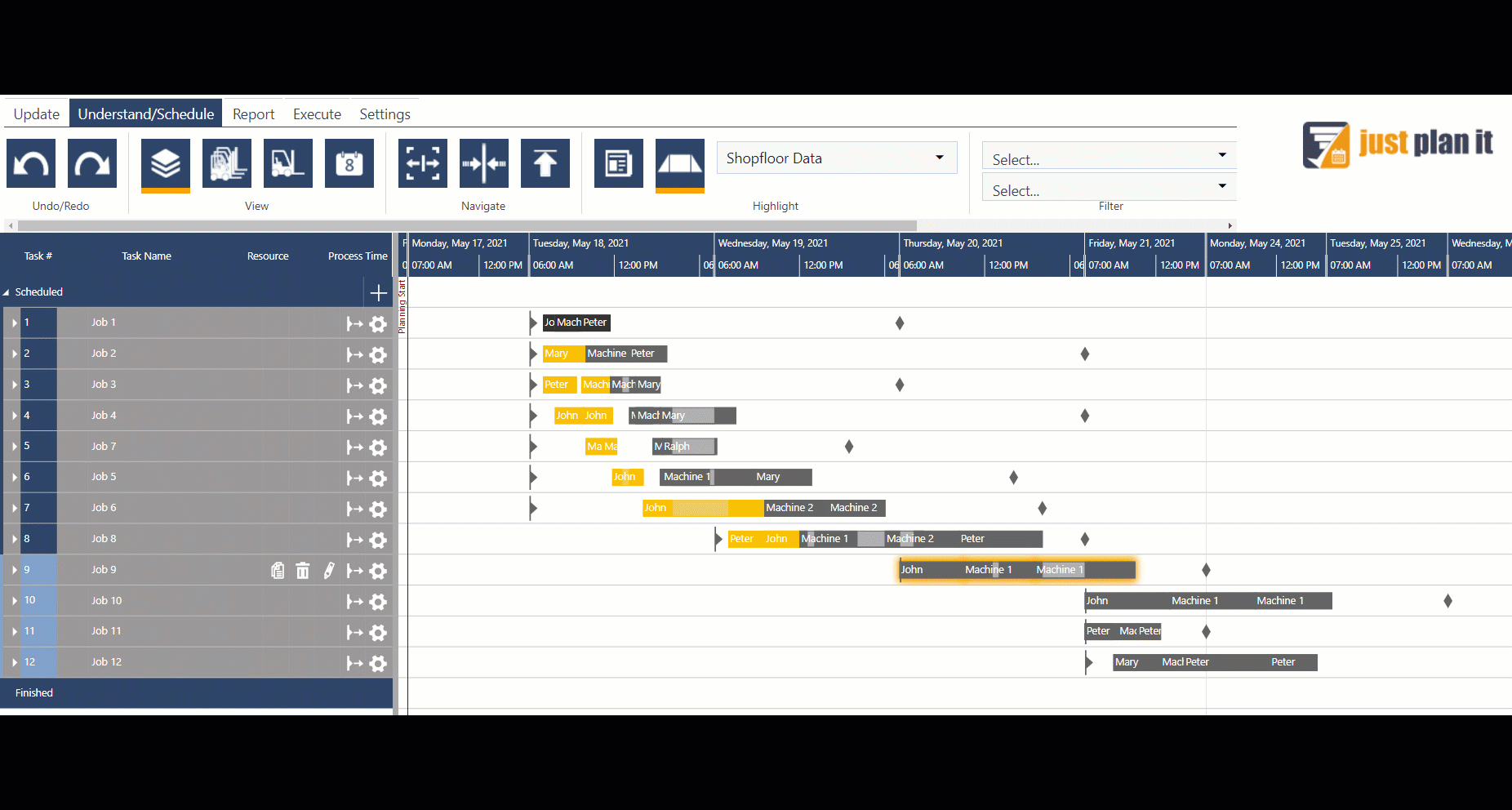
The heart of the software is a graphical planning board equipped with many functions that make rescheduling easier and safer. By this, the planner wins an overview of what is going on on the shop floor and better control on jobs, resources, and delivery dates. Besides visual warnings, he has a variety of options to "create" his own schedule, like fix jobs at a specific date, set constraints, split tasks, and much more.
just plan it not only makes the life of a production planner in a high-mix low-volume manufacturer easier by combining automatic scheduling with powerful, user-friendly manual scheduling functionalities- what we call hybrid production scheduling. It also increases the profit of the company, by
Which data are essential for production scheduling in HMLV job shops ?
What production schedule do high-mix low-volume companies need to grow?
30% decrease in WIP with purpose-built software for HMLV manufacturer
Get a free consulting by one of our scheduling experts and learn how just plan it can bring more efficiency in your job shop.
just plan it is a production scheduling software plus scheduling tools & best practices to help high-mix low-volume make-to-order manufacturers gain transparency and control over their shop operations. The software plus its methodology is used by thousands of people around the globe. They consistently achieve improved on-time deliveries, shorter lead times, and better utilization of their resources.
As just plan it is not just software, but a lot of processes and best practices, we recommend that you start with an exploratory meeting. If we agree that there is a fit between your requirements and our approach, we'll build a prototype for you.
Hence, it all starts with a meeting. Book that meeting now.
These Stories on Machine shop scheduling
Made with by BOYUM IT SOLUTIONS GmbH (Copyright © 2024) Read our Privacy Policy & Terms of Service
No Comments Yet
Let us know what you think